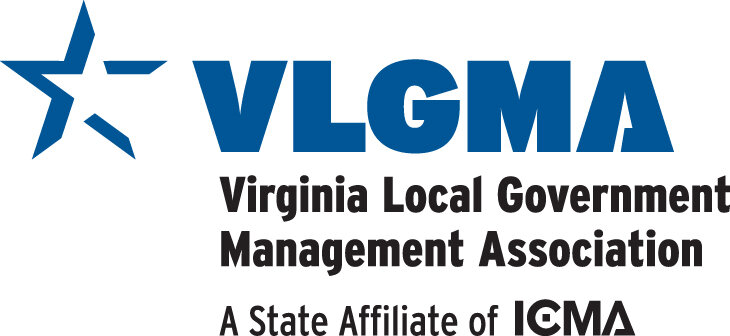A DAO in the Life
By Laura Triggs, Deputy City Manager, City of Alexandria
What Does Success Look Like?”
Leadership Lessons from My Work as a Deputy City Manager
A close colleague good-naturedly jokes with me about how often I ask a question to the effect of, What does success look like? But I don’t mind because (as my colleague acknowledges), I intentionally raise that question to the department with whom I work to establish a meaningful starting point for our operational or policy discussions.
Planning for Success
As a Deputy City Manager for the City of Alexandria, I directly supervise the department heads for many of the City’s internal departments, or what we consider to be our municipal government’s “organizational infrastructure.”
To create the starting point for achieving success with department leaders, I find most helpful for me is to employ the question, What does success look like? And then ask questions to gain information about costs, required resources, and appropriate performance measures. As a recovering accountant, using a spreadsheet works well for me; however, any planning document works. The purpose of asking the success question and documenting the path and desired incomes is to improve our outcomes over time, as well as guide the work.
Goal setting and planning are helpful, if not necessary, to achieve consistent success, but more is needed to maximize organizational success. What I saw in my organization during the pandemic underscores just how important caring for and empowering people”[1] is in leading organizations.
What the Challenges of the Pandemic Taught Me About Success
The pandemic upended our processes and plans we used to execute and measure success. It seemed that just about every process my organization had in place no longer worked. Careful planning was essential, but not sufficient to meet the challenges facing our teams responding to challenges raised by the pandemic. With a little bit of hindsight from our work in 2020 and 2021, I see three additional drivers of success.
One Goal
The first driver of our success during the pandemic was simple: one. One goal. One priority. One team. All rowing in the same direction, keeping our heads above water. Yes, cliché-ish. But so accurate: we succeeded because teams had just one goal.
Our pandemic response teams were assembled from a variety of our programs across the city government; the team members were working outside their regular silos, often with teammates they didn’t know, and successful collaborations were far from certain. But I sensed how so many of our city staff bought into their team’s goal, feeling each success was a team success, motivating extraordinary efforts. A public vaccine site was opened for our citizens. Team success. A city council Zoom meeting was set up and occurred. Team success. A meal was delivered to a citizen. Team success. I am gratified at the buy-in our teams demonstrated during these challenging times. And I saw how by having one team goal helped everyone work together to support each other in achieving success.
People “In the Room”
During the pandemic, our organization expanded the number of City staff “in the room” to brainstorm, plan, and make many decisions. Our organization brought in more people because of the recognized need for quicker, informative communications instead of relying on the typical, slow-moving, and rule-laden processes involved with reporting up and directing down the hierarchy. For example, for a series of logistics meetings for pandemic responses, dozens of persons would be on the planning and decision-making virtual meetings to discuss how to plan and implement wide-ranging pandemic-response activities—from food deliveries to small business loans, to setting up vaccine sites, to hybrid online meeting support.
I believe the speed and effectiveness of the City’s pandemic response was due in large part because team members not only had one clear goal, but they also had a voice—they contributed to decisions and gained ownership of their goal and implementation. Indeed, empirical research has shown that the workplaces where employees have more of a voice are most likely to produce innovative solutions.[2] I believe sharing decision-making is a good lesson to take into our post-pandemic world. As Bill Gates reportedly forecasted years ago, “As we look ahead to the next century, leaders will be those who empower others.”
Expressing Gratitude
As the most stressful months of the pandemic started to be behind us, some teams came out thriving; others were looking for new footing. That is where I saw gratitude being most impactful. Teams whose leaders and members could and did express genuine gratitude were those that continued to succeed. Indeed, leaders who express gratitude have been shown to develop the next generation’s best leaders. And there are many leadership articles with suggestions for how to express gratitude, including, for example, offering short, specific statements that share why you believe the team’s work led to success.
Success: Planning Plus Addressing the Human Side
What does success look like for me for any policy or operational issue? It starts with that question and a plan. And it also must include valuing people: effective leaders communicate a team’s priority, allow more people to share in brainstorming and decision-making, and provide positive feedback through sincere statements of gratitude.
[1] See, e.g., Simon Sinek, Leaders Eat Last: Why Some Teams Pull Together and Others Don’t (New York, Portfolio Penguin,2014) emphasizes that when employees have a say they feel a sense of ownership
[2] See, e.g., Chenwei Li, Yuntao Dong, Chia-Huei Wu, Michael E. Brown, Li-Yun Sun “Appreciation that inspires: The impact of leader trait gratitude on team innovation” (Journal of Organizational Behavior Volume 43 Issue 4, p 693-708, 2021)
